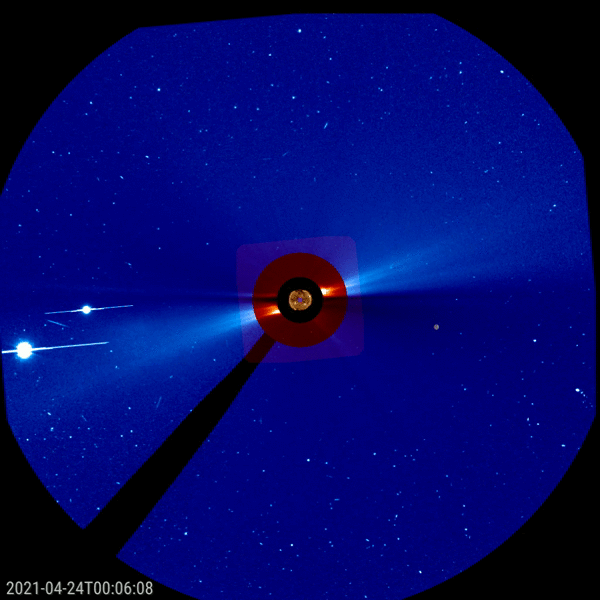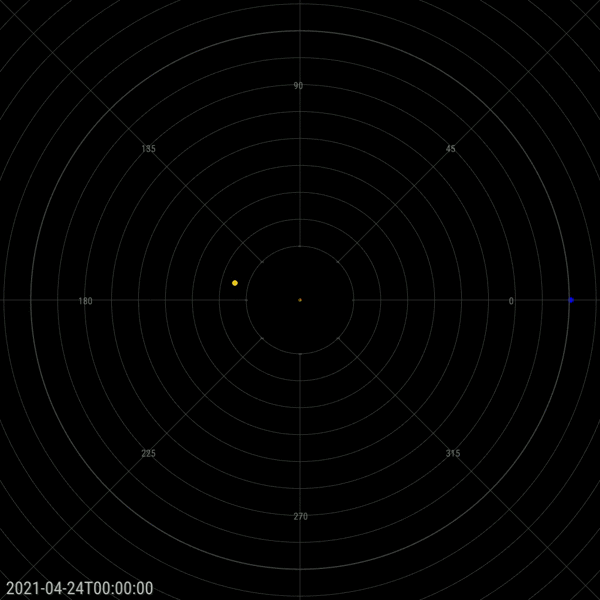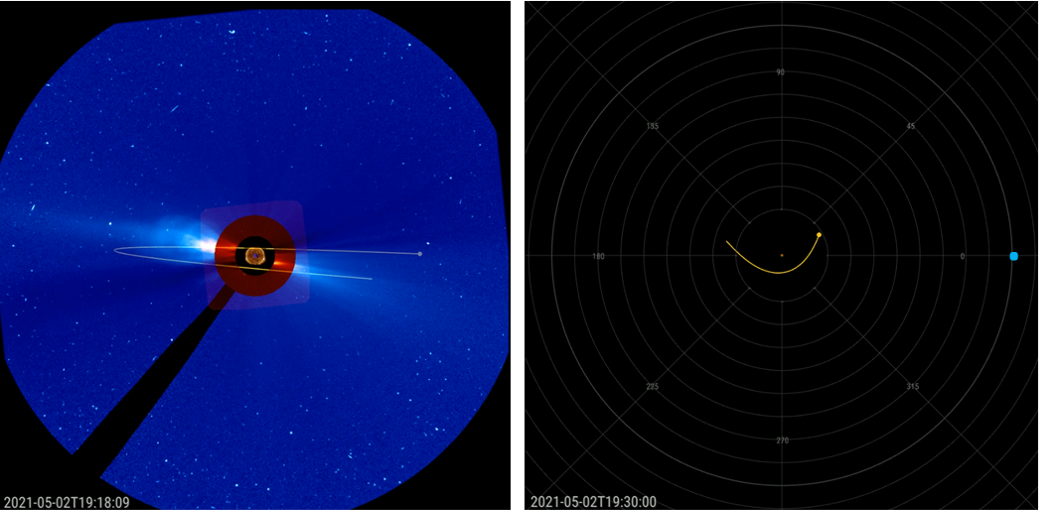On its continuing quest to unravel the mysteries of the solar wind, the Parker Solar Probe (PSP) had its 8th perihelion (closest distance to the Sun) on 29 April. A description of the goals and technologies of this spacecraft is in this STCE Newsitem and of course on the dedicated NASA website.
The folks here at STCE have superposed part of the orbit of PSP as seen from Earth on coronagraphic images obtained by the SOHO/LASCO instrument and solar EUV images by SDO/AIA. It covers the trajectory of PSP from 24 April till 02 May 2021, with perihelion on 29 April at a distance of only 11.1 million km or 16 solar radii. As seen from Earth, the spacecraft starts from behind the Sun, has its intimate rendez-vous to the east of the Sun ("left"), then turning and passing in front of the Sun. The clips underneath show the trajectory from within the ecliptic as seen from Earth (top) and from above the ecliptic (bottom; PSP trajectory only, the blue dot on the right represents Earth). The ecliptic is the plane created by the yearly orbit of the Earth around the Sun. Over the next few years, PSP will get even closer to the Sun!


The movie combining PSP's trajectory with SOHO's coronagraphic and SDO's EUV imagery is great for a few reasons. First of all, it illustrates the concept of heliophysics quite completely: it shows the Sun, its corona, the solar wind with its transients (coronal mass ejections aka "CMEs"), then (solar) cosmic rays which are visible as mostly short stripes in SOHO's imagery, and even two planets on the left: Venus and (the faster moving) Mercury, all affected by the variable output of the Sun. Second, the combo movie illustrates the two techniques used for observations: remote-sensing (EUV imager - SDO/AIA, coronagraphs - SOHO/LASCO) and in situ measurements (PSP). And finally, the PSP perihelion was very close to the LASCO plane of the sky, so the movie gives the right idea.






